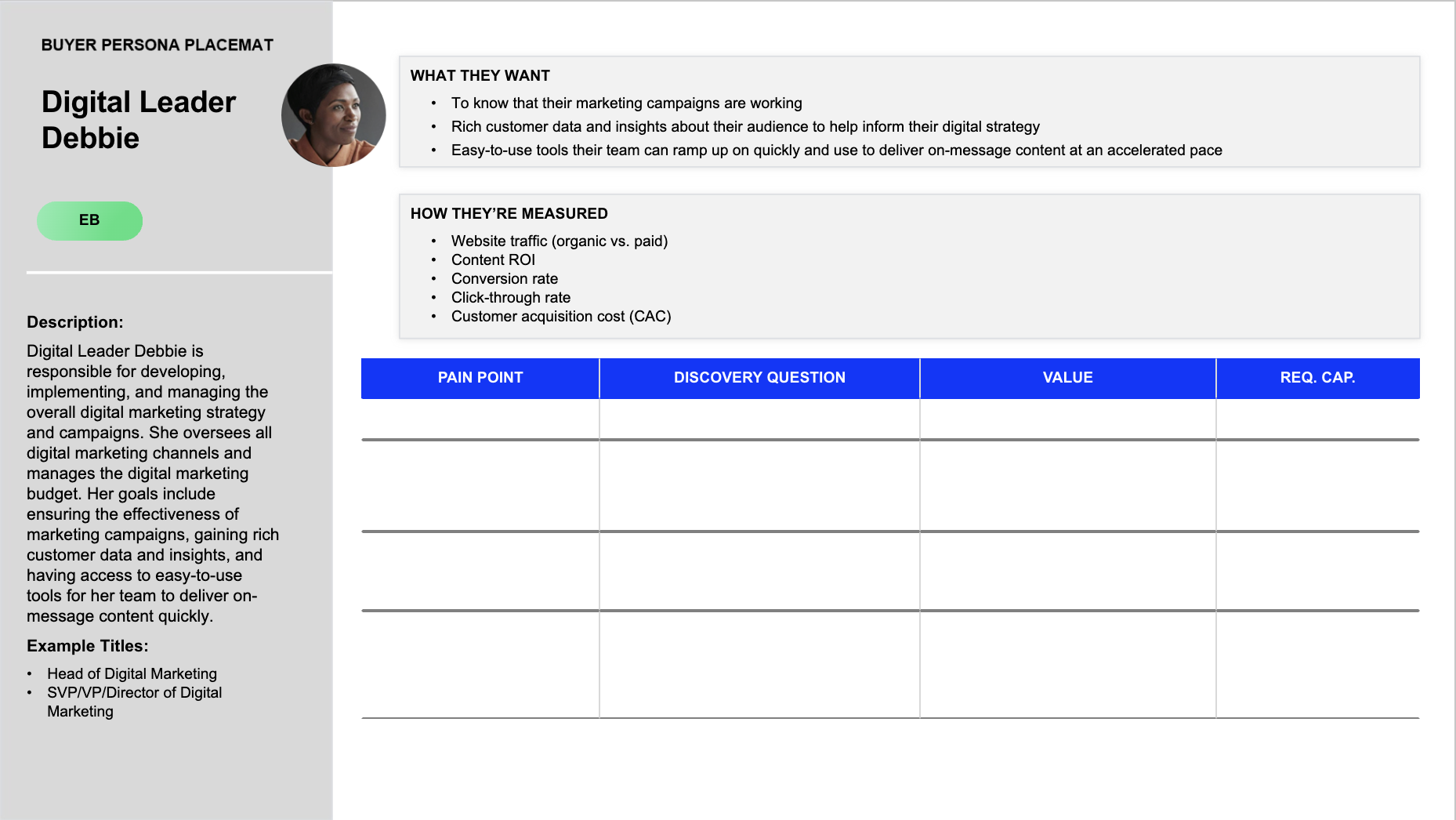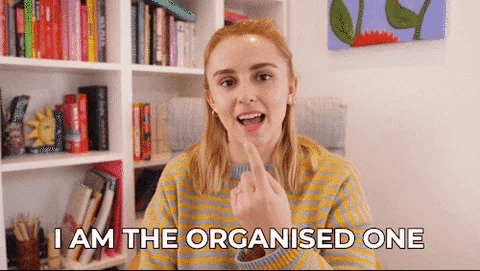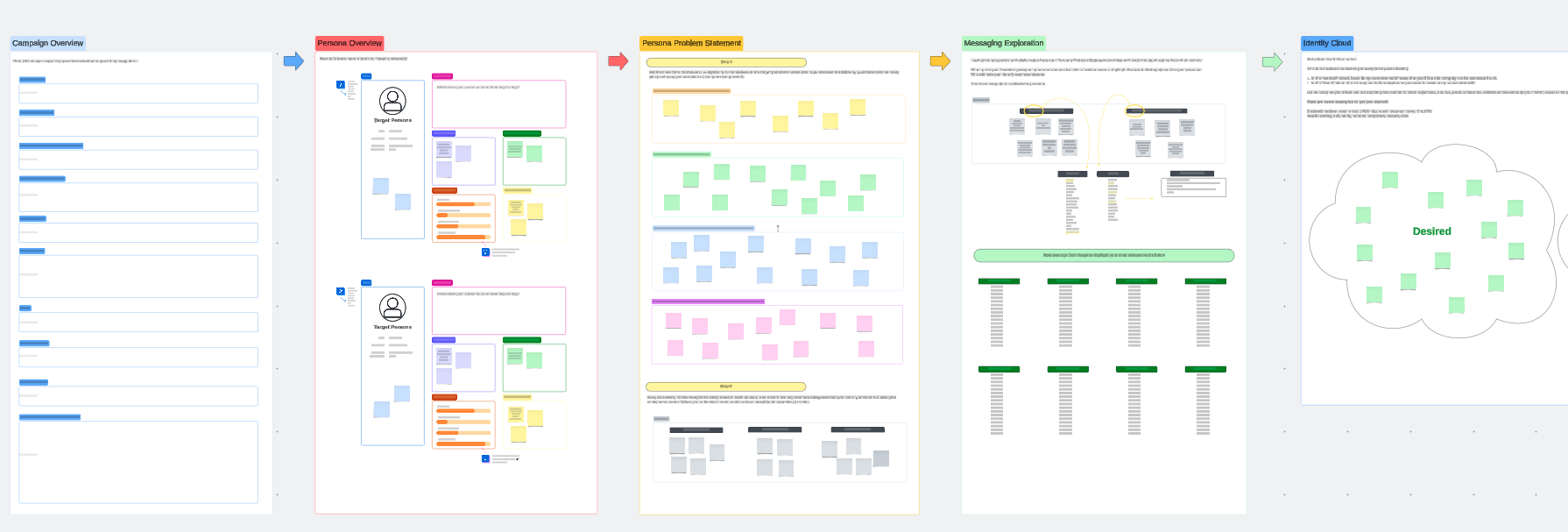Picture this: You’re sitting in a room with a blank whiteboard, armed with nothing but your imagination and a bunch of colored markers, ready to create something big, bold and mind-blowing.
... or, maybe not so ready. It’s okay, guys – you’re in a safe space, we can admit our imaginations aren’t always on their A-game. Creative burnout be real.
Either way, it’s time to start with your marketing campaign brainstorming session.
Why? Because brainstorming inspires new ideas, pushes the B2Boooooring marketing boundaries, collaboration in your team, and makes things a little more fun.
Let’s run through the step-by-step process of how to brainstorm a creative marketing campaign – whether that’s with a virtual whiteboard or in the office (with your wide array of pens).
If you’re in a pinch for time, skip straight to getting your free creative brainstorming template.
Before you start brainstorming
Let’s start with a little bit of housekeeping before you start brainstorming for your next creative marketing campaign... because no one likes a meeting without the “meat” (sorry, vegans).
Make all meetings and brainstorming sessions worth everyone’s while by having the foundations set, so relevant creativity can flourish. 🌸
Step #1: Know your audience
The best way to find a creative campaign idea that *actually* works is to know your audience really, really well. You need demographic data, but you also you need to understand what their lives are like and how your product fits into it.
As storytelling expert Jonah Sachs says, “Good marketers see consumers as complete human beings with all the dimensions real people have.”
Taking a look at the B2B world specifically, you can start to really know your audience by answering these questions:
- How do your buyers/users measure their success?
- What gets in the way of them achieving their goals?
- What do they love about what they do? What’s difficult about it?
In other words: what’s going to stop your customer from getting their bonus this year?
And for B2C, similar... just less ‘success’ metrics, and more revolved around pain points or other user benefits. Turn your offering from something they didn’t know about before into a omg-I-need-this-right-now.
Always think about these things as if you’re in their shoes. To dive deeper into those (ideally, not smelly) shoes, you should make the most of the teams you have around you by talking to:
- Sales: Hear about the prospects and leads they are talking to, along with the pain points that lead to these conversations
- Account managers: With close relationships to accounts, you can hear what they’re looking for in a product and in content – and help with retention, upsells and nurture
- Customer success: Identify gaps in your content and come up with content ideas to help solve problems or engage clients
- Product marketing: No one understands brand messaging and positioning quite like product marketing – make sure each stage of the funnel is filled with relevant content
Once you complete this step, you will probably have some ideas flying around your head already.

Step #2: Create and agree on your goals
You know who you’re talking to, so bring it back in-house. What does your team need to achieve with this campaign?
Looking for increased awareness or trying to drive an action show up differently once you bring those ideas to life.
Getting everyone aligned on marketing goals, campaign goals, and individual goals within the campaign gives you that foundation so people know what’s UP... and what to go off when that meeting starts.
Step #3: Establish your channels and budget
Where and when will your campaign live? The difference between a social campaign and planning an invite-only sponsored dinner will naturally determine the activities and assets you’ll need so get planning.
Any questions or things that aren’t specified yet? Prepare for different options and bring your questions to the brainstorming session.

Let’s get to the fun: It’s brainstorming time!
Check, check, check 👈 That’s you smashing through your marketing brainstorm to-do list. Now, it’s time to get those creative juices flowing.
Step #4: Run your brainstorm session
You’ve got your guardrails and your frameworks, and its finally time to start getting those ideas down.
To help kick off your session, consider using some of these techniques:
- Bad ideas brainstorm: Set a time and write down the worst ideas you can possibly come up with. Why does this work? Because you’re tricking your brain into creatively solving a problem by identifying all the ideas that should never see the light of day. David Ogivly said the best marketing ideas begin as jokes, and there’s no better mantra to follow for this brainstorming technique.
- Brainwriting: Hate rapid idea generation? Try brainwriting. This technique involves reading a question or problem statement and then writing down your ideas. Then, you’ll pass your paper to the next person and keep going until everyone has contributed to all of the pieces of paper.
- Starbursting: We love a game of Jeopardy, so starbursting is a great go-to for our team. Instead of trying to solve a problem, you’ll come up with questions related to the idea and list them.
Here are some brainstorming techniques our team used in practice in our last campaign brainstorm. You can use any mix of these techniques, some of them, or all of them to get to your final campaign concept.
- Persona problem statement
- Messaging exploration
- Identity cloud
- North Star
After your brainstorm
Or you could say: the calm after the (brain)storm. 🥁 We’re here all week.
Step #5: Build your inspiration log or moodboards
Capturing your ideas and preparing them for prime time is a critical part of the creative process. If you haven’t used an inspiration log or moodboard lately, it’s worth checking in to remind yourself of what the process can look like and be used for.
Moodboards can include so much more than notes or static information: you can add videos, links, and more importantly, collaborators. And the best bit is they can look however you want – you can get some inspiration from brands like Miro though.
Use moodboards to:
- Conceptualize an idea
- Collect and comment on sources of inspiration
- Communicate concepts to your team and other stakeholders
Determining the goal of your moodboard guides you in the right direction for exploring your idea. From here, add in:
- Existing material (like brand guides, messaging, tag lines, or goals)
- Pull in visual elements that relate to your concept (these can be metaphorical, they don’t have to be creative product)
- Add notes to explain your thinking so far, important feedback, and open questions
Does the moodboard concept make you a little nervous? Sometimes, we try to start with the end in mind when these processes are actually about the journey. So, relax and kick-off the session with what you know about your customer, your product, and your market. Then, build out your ideas from there.

Step #6: Explore your campaign routes
While you might feel like that marketing brainstorming could go on forever, there has to be an endpoint.
Take that brainstorm and transform it into concrete, pitchable concepts (that everyone will LOVE).
Campaign pitches need to bring in all the background information that you gathered, as well as the brilliant brainstorming outputs you and your team came up with, and turn it all into actionable marketing strategies.
The process might look something like:
- Identify key themes from your brainstorming
- Align themes with campaign objectives
- Develop brief narratives for promising directions
- Match ideas with suitable marketing channels
- Outline key visuals for each concept
- Create mini-pitches including concept, audience, messaging and expected outcomes
- Assess feasibility considering budget and resources (warning: can be heartbreaking)
- Refine and prioritize the favorite routes to take
- Seek feedback from stakeholders if necessary
- Choose the one with the best balance of creativity and impact
Oh, and #11 can be “Cross your fingers for easy feedback and successful execution”. 🤞
Step #7: Thrive from feedback
The best feedback is wide open feedback. That’s right guys, feedback isn’t – or shouldn’t be perceived as – criticism. It’s a tool for growth, so you best get used to it.
Actively seek input, listen with an open mind, and use diverse viewpoints to take your campaign from good to great.
Create a safe space for your team – learn how to give and take constructive feedback and not get offended!
A brainstorming template for your next creative marketing campaign
Ready to get started on your next brainstorming session? Check out our brainstorming template – made especially for creative marketers.
Brain-dumps are oh-so welcome.
Get your brainstorming template.

- Last modified: 4/28/2025 2:50:58 PM
